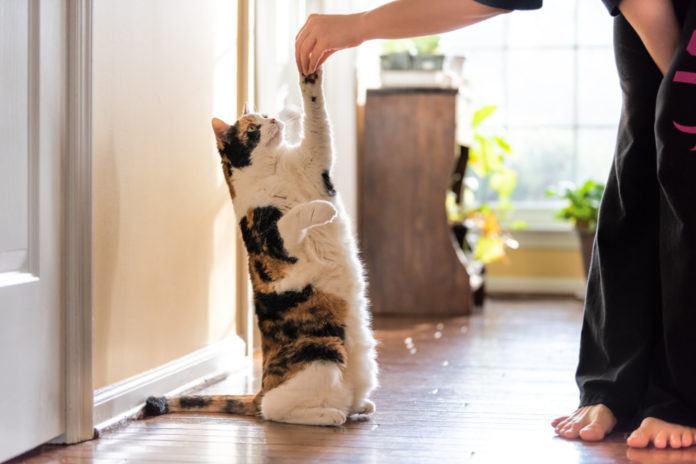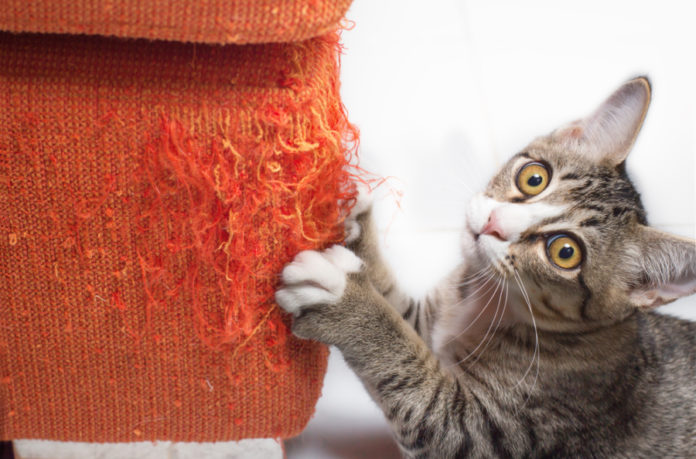Tricks you can teach your cat

Dogs aren’t the only animals that can learn tricks! Cats can too – it just requires some patience and diligence.
When we think about trick training, we usually think about dogs. Trained cats don’t tend to come to mind. But kitties of all ages can be trained to do tricks. The “trick” to training your cat is knowing you can’t do it the same way you would a dog.
Why teach your cat tricks?
Teaching your cat tricks serves a greater purpose than just providing party entertainment for your friends. It adds a layer of well-being to your cat by reducing stress, boredom and related negative behaviors. Learning tricks stimulates his brain and mental acuity; active minds have more nerve connections and enhanced brain function. Trick training also provides exercise to burn off energy and calories.
Food — the motivating reward
Dogs and cats are motivated by things that give them the greatest benefit (aren’t we all?). Dogs are more adept at reading our cues, and are eager to please us for a reward. Cats aren’t wired with the “need to please”, so it’s important to find out what their motivating reward is. Studies show that the fastest way to train a cat is through the stomach, using small portions of high-value food, such as chicken or tuna. Small portions are in line with how a cat normally eats, plus it keeps down his daily caloric intake. For the highest levels of motivation, it’s best to train your cat when he’s hungry. Don’t starve your cat, of course, but train him between his meals.
Like dogs, cats learn best when positive reinforcement is used for the desired behavior. Negative reinforcement such as hitting or yelling is not only inhumane, it doesn’t work. It teaches the cat to avoid the person and associates the behavior, situation or place with fearful emotions.
3 training tips
1. Be patient
You’re on cat time, not human or dog time. Not all cats learn all tricks. It must be fun for him in order for him to learn. Teach your cat one trick at a time until it’s mastered, before adding a new one. When you or your cat gets tired or frustrated, quit for the day.
2. Be diligent
Work with your cat every day — sporadic training doesn’t work. Keep sessions short, about 15 minutes each, and end on a positive note while your cat is still interested. Stop before he gets excited and grabby with paws and claws. Watch for cues such as dilated pupils, flattening ears, rippling skin and tail-thrashing. Vary the time of day and location for the training, so the trick is learned independent of time and place.
3. Be consistent
Start by saying your cat’s name then the instruction. Be consistent with the words you use, and with the rewards, to avoid confusing your cat. Don’t say “high five” one day and “fist bump” another. Rewards should be given until the trick has been fully learned, then intermittently after that.
Try teaching him these tricks
Sit
The easiest tricks to teach your cat involve natural behaviors he already does. “Sit” is a perfect example.
- Have the treat in your hand and let your cat see and smell it.
- As your cat smells the treat, move it upward and slightly back over his head. As his nose moves up, his haunches naturally go down.
- Say “sit” when your cat sits, and give the reward at the same time. You can also use a hand signal, held up in the stop position, to deepen the learning.
High five
Teaching your cat to do a “high five” is also easier than you might think. Just be sure to pick one name for the trick and stick with it, whether it’s “high five”, “shake” or “fist bump”.
- To start, encourage tiny paw movements when your cat naturally lifts a paw off the floor, and give him a treat.
-

With a treat held in your closed hand, wait for your cat to try to grab it, then give the treat as a reward.
- Gradually raise your hand higher; when your cat touches it with a paw, give him the treat reward.
These are only two examples of tricks you can teach your cat. Felines are smart and can be easily trained with positive reinforcement. It also reduces stress, counteracts boredom, and provides mental and physical stimulation while deepening your bond with your cat. With patience, diligence and consistency, you and your kitty will soon be ready to delight your family and friends with some smarty-cat party tricks!




